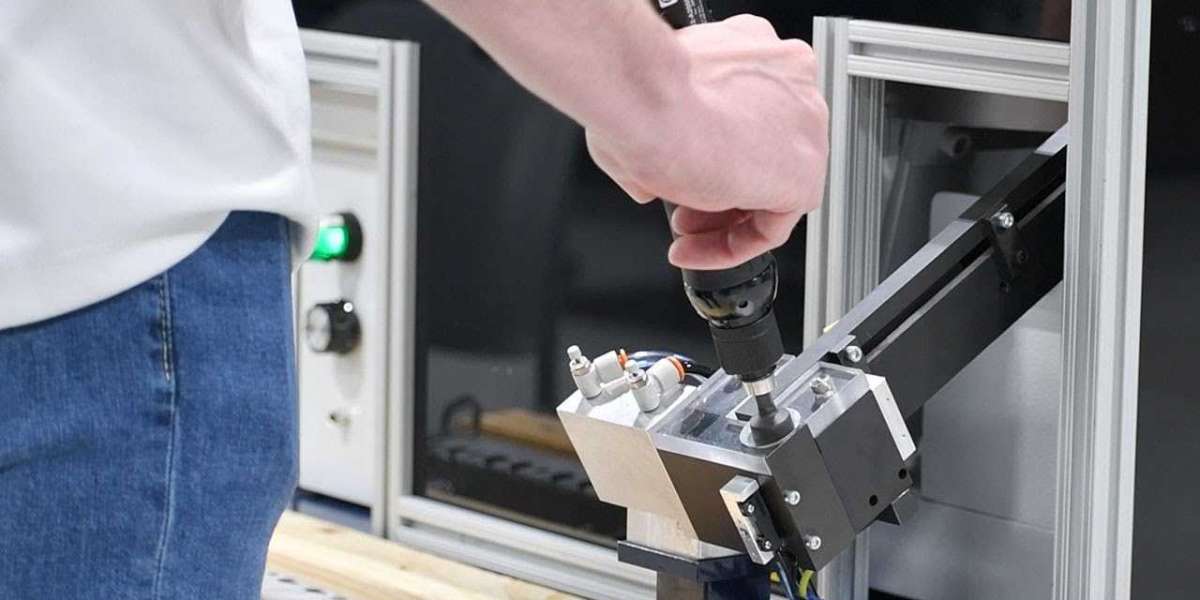Manual Screw Presenters:
Manual screw presenters are basic systems that rely on manual operation to present screws to the operator for fastening. They typically consist of a hopper or tray where screws are loaded, a track or tube that guides screws to the presentation point, and a mechanism for releasing individual screws for pickup by the operator. Manual screw presenters require the operator to manually advance screws into position using a lever, button, or foot pedal, depending on the design of the system.
Manual screw presenters are simple to operate and require minimal setup and maintenance. They are ideal for low-volume assembly tasks or applications where flexibility and adaptability are essential. Manual systems are often more affordable than automatic systems, making them a cost-effective option for small-scale production or prototyping environments. Additionally, manual screw presenters offer greater control over screw feeding and placement, allowing operators to adjust the presentation speed and sequence as needed.
However, manual screw presenters have limitations in terms of speed and efficiency compared to automatic systems. They rely on the manual dexterity and coordination of the operator to pick up and fasten screws, which can lead to slower cycle times and increased operator fatigue, especially for repetitive or high-volume tasks. Manual systems may also be prone to inconsistencies in screw presentation, resulting in occasional jams or misfeeds that require manual intervention to resolve.
Automatic Screw Presenters:
Automatic screw presenters are advanced systems that use motorized or pneumatic mechanisms to automate the screw feeding and presentation process. They feature a hopper or feeder system that automatically dispenses screws onto a track or conveyor belt, where they are then transported to the presentation point for pickup by the operator or a robotic assembly system. Automatic screw presenters offer higher speed, efficiency, and consistency compared to manual systems, making them ideal for high-volume production environments.
Automatic screw presenters are capable of feeding screws at a much faster rate than manual systems, significantly reducing cycle times and increasing overall assembly throughput. They eliminate the need for manual intervention in the screw-feeding process, allowing operators to focus on fastening tasks and other assembly operations. Automatic systems also offer greater precision and accuracy in screw presentation, minimizing the risk of misfeeds, jams, or errors that can occur with manual systems.
Additionally, automatic screw presenters can be integrated with robotic assembly systems or automated assembly lines, further enhancing efficiency and productivity. They can synchronize screw feeding and fastening operations with other assembly processes, ensuring seamless coordination and minimizing production bottlenecks. Automatic systems are also capable of handling a wide range of screw sizes and types, making them versatile solutions for diverse assembly applications.
However, automatic screw presenters are typically more complex and expensive than manual systems, requiring additional setup, programming, and maintenance to ensure optimal performance. They may also have higher initial investment costs and ongoing operating expenses associated with power consumption, maintenance, and repairs. Additionally, automatic systems may require specialized training for operators to effectively program and operate, especially in complex or customized assembly environments.
Final Thoughts:
In conclusion, both manual and automatic screw presenters offer advantages and disadvantages depending on the specific requirements of the assembly process. Manual systems are simple, flexible, and cost-effective solutions suitable for low-volume or prototype production environments. They offer greater control over screw feeding and placement but may be limited in terms of speed and efficiency.
Automatic screw presenters, on the other hand, offer higher speed, efficiency, and consistency, making them ideal for high-volume production environments where throughput and productivity are paramount. They automate the screw feeding process, minimizing cycle times and operator fatigue while ensuring precise and accurate screw presentation. However, automatic systems are typically more complex and expensive than manual systems and may require additional setup, programming, and maintenance.
Ultimately, the choice between manual and automatic screw presenters depends on factors such as production volume, assembly requirements, budget constraints, and available resources. By carefully evaluating these factors and understanding the capabilities of each type of system, manufacturers can select the most suitable screw presenter solution to optimize assembly efficiency, productivity, and quality.







